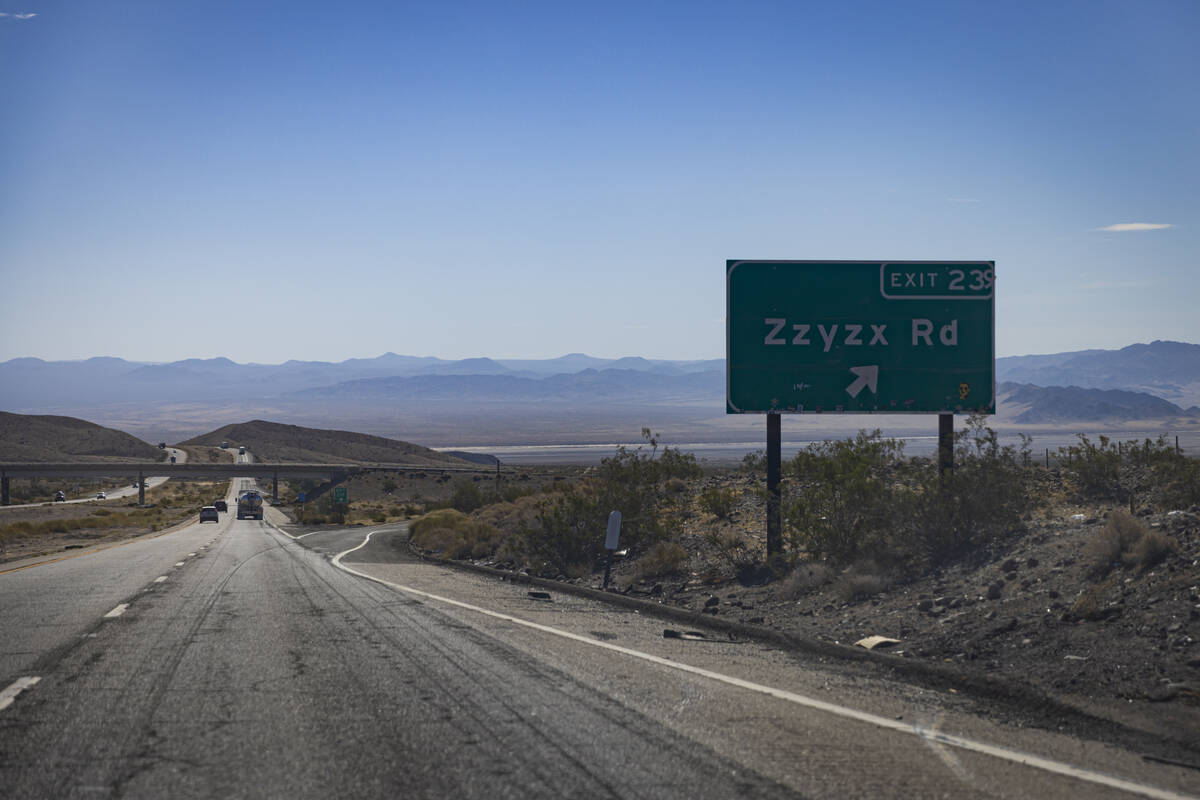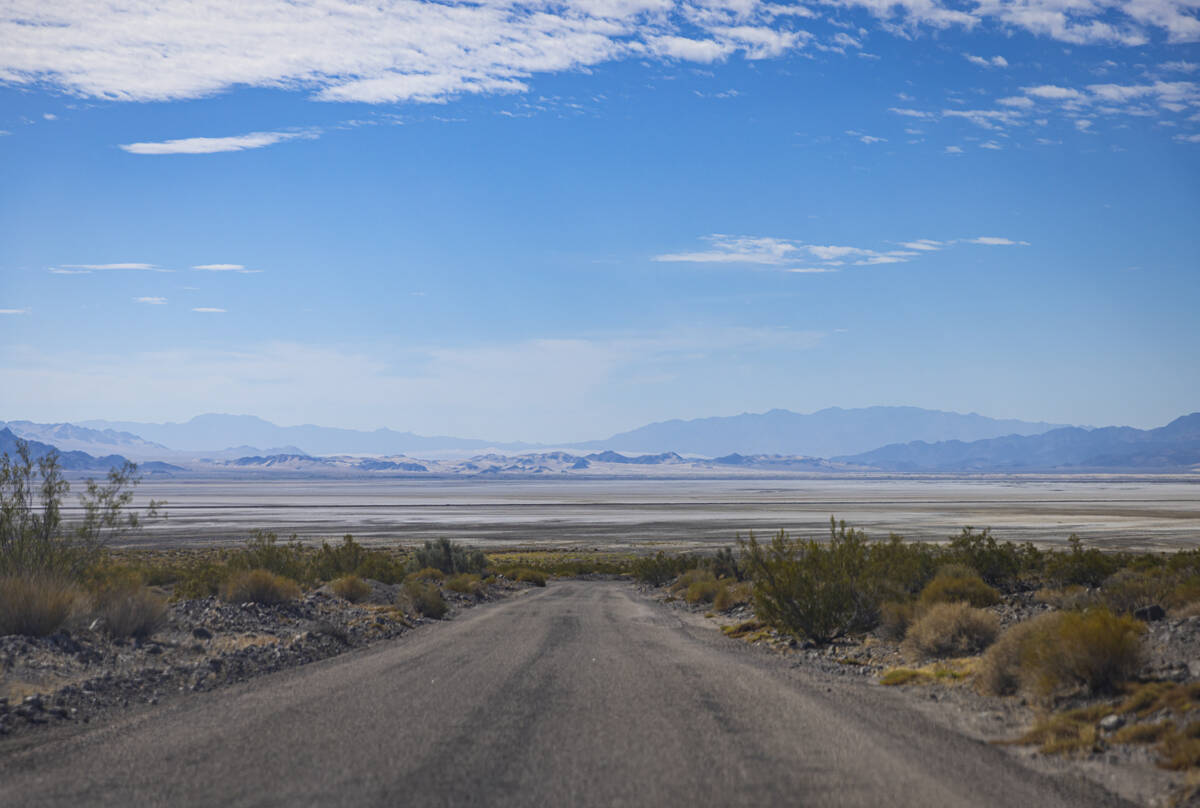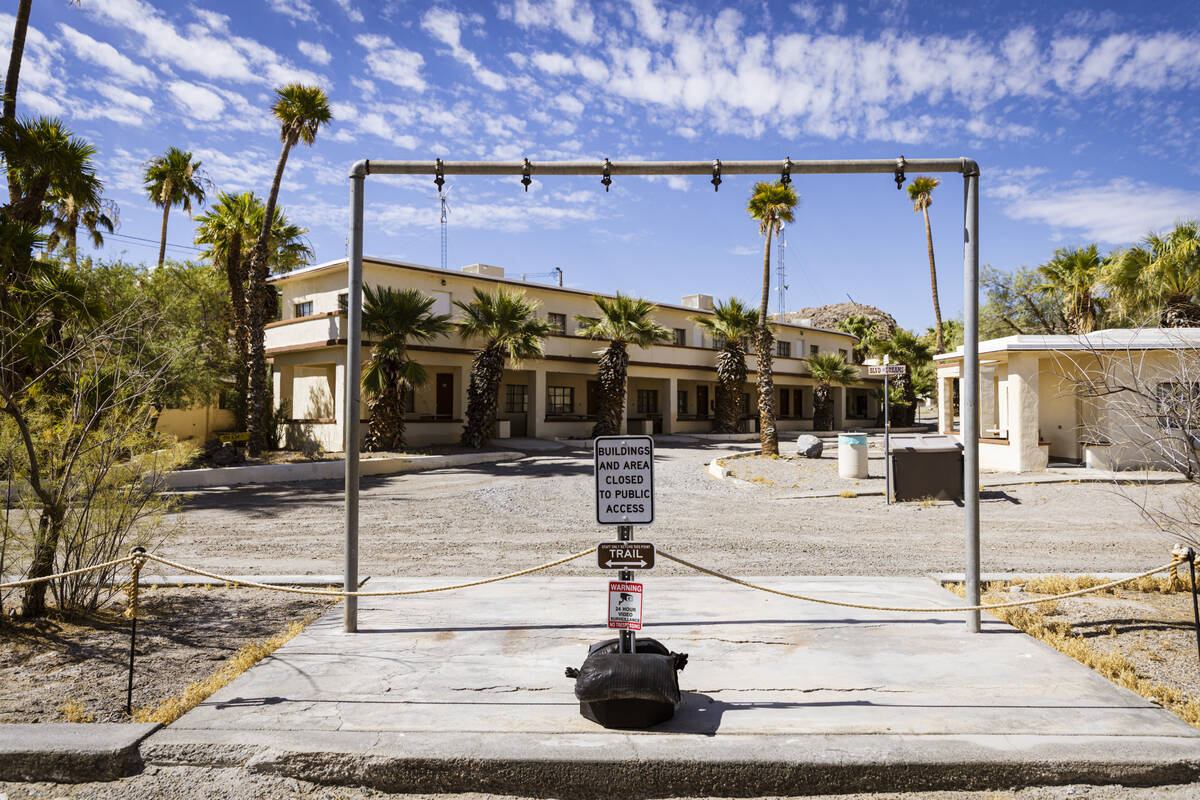What is Zzyzx, and where does the name come from?
If you’ve ever driven between Southern California and Las Vegas on Interstate 15, you may have seen a sign for a road along Interstate 15 with a hard-to-pronounce name: Zzyzx.
But who came up with the name, and what does it mean?
That name, pronounced Zye-zix, comes from a medicine man who built a health resort in the area. The land was once known by 19th century pioneers in Southern California as Soda Springs after its natural spring system, according to the California State University Desert Studies Center.
In the 1940s, preacher Curtis Springer filed mining claims for 12,800 acres that would be developed into the Zzyzx Mineral Springs and Health Resort. The New York Times reported in 1970 that Springer learned about Soda Springs in a book called “Mineral Springs of the Pacific Coast” that he bought for 25 cents at a secondhand book store.
But his mining claims did not permit him to develop a resort on the land, which got him in legal trouble with federal officials decades later.
Springer named the place Zzyzx because he “wanted to have the last word,” he told the Times in 1970.
However, you won’t find that word in any dictionary.
In its heyday, the resort could accommodate up to 140 guests who would come to Zzyzx to bathe in its mineral springs, listen to Springer’s lectures and try his health food products that he claimed could solve almost any ailment, the Times reported. The paper described him as “part preacher, part doctor, part entertainer, part builder, part philanthropist, and part free-wheeling entrepreneur.”
Though many guests believed the resort’s springs had miraculous medicinal powers, Springer himself didn’t believe the hype.
“Frankly, the mineral baths really don’t help much except psychologically,” he told the Times.
This belief, however, didn’t stop Springer from charging guests $50 a week to stay at the resort — though about a third of all guests paid no fee, thanks to donations and lecture fees, the Times reported.
“God will provide,” Springer told the Times. “If you play the game fair, I believe the big boss upstairs will level things out. That’s my religion.”
Zzyzx faces legal troubles
The Bureau of Land Management began working in the 1960s to evict Springer from Zzyzx after years of court proceedings over Springer’s right to the land. Federal officials argued Springer was using his mining claims to squat on federal land and was in violation of mining law, according to the desert research center.
In May 1974, after three decades on the land, the 77-year-old Springer got the boot from the feds, leaving the resort’s rundown buildings behind, The Associated Press reported at the time.
He spent several months in jail after being convicted of illegally using federal property and for false advertising and misrepresentation of his health food products, and later moved to Las Vegas, where he died in 1985.
In 1976, the BLM and seven Southern California colleges and universities formed the California Desert Studies Consortium that transformed the old resort’s dated buildings into the Desert Studies Center, which researches the archaeological, biological and geological history of the Mojave Desert, The Associated Press reported.
The center also conducts research on the endangered Mohave chub — a fish found only in Lake Tuendae, an artificial pond excavated by Springer at the resort, according to the National Park Service.
Today, Zzyzx and the Desert Studies Center are located within the boundaries of Mojave National Preserve, which encompasses 1.6 million acres.
Visitors can reach Zzyzx and the center by exiting Interstate 15 onto the half-paved, half-dirt Zzyzx Road. The only area open to the public in Zzyzx is the Luke Tuendae interpretive trail operated by the preserve, according to the center.
Contact Taylor Lane at tlane@reviewjournal.com.
































